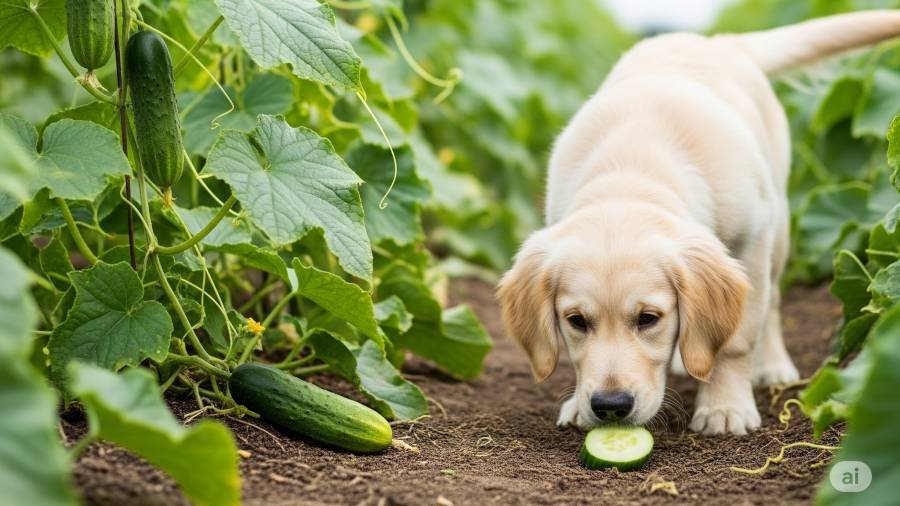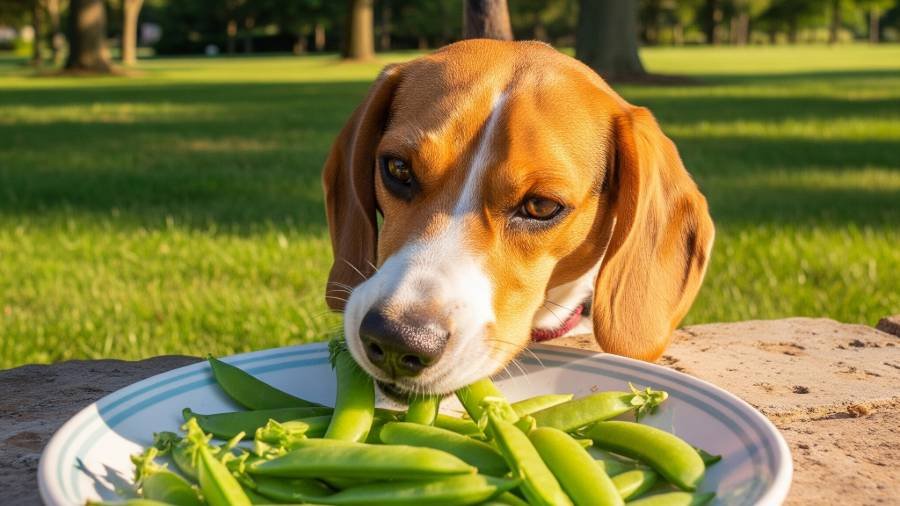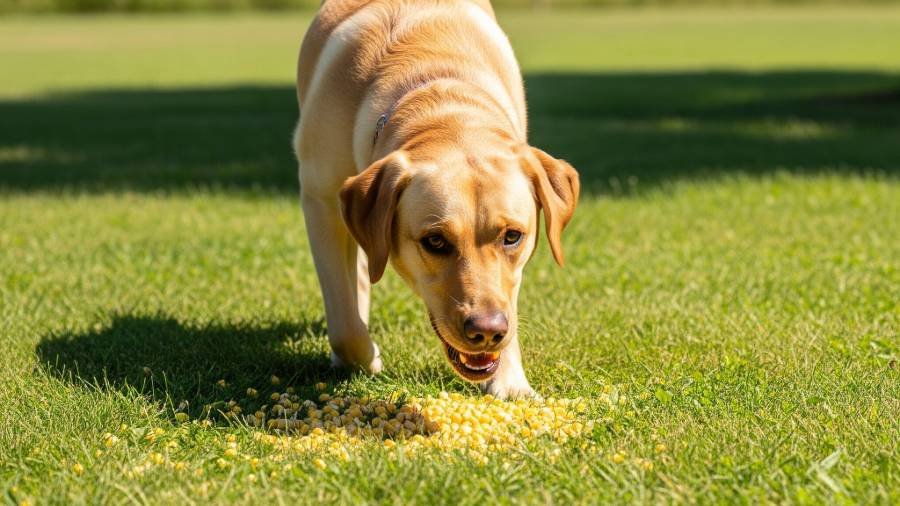Yes, dogs can eat salmon as a healthy and nutrient-rich addition to their diet when properly prepared, offering a source of omega-3 fatty acids and other benefits.
However, raw or undercooked salmon poses significant risks.

Potential Benefits of Salmon for Dogs
When dogs can eat cooked salmon in moderation, it provides several advantages that enhance a dog’s diet:
- Source of Omega-3 Fatty Acids: Salmon is packed with omega-3s, supporting skin health, reducing inflammation, and boosting the immune system.
- Sources of Protein: As a high-quality protein, it aids muscle maintenance and overall energy levels.
- Vitamins and Minerals: Rich in vitamin D, B12, and selenium, salmon promotes bone health and nervous system function.
- Heart Health: The fatty acids may help lower the risk of cardiovascular issues in dogs.
- Coat Shine: Regular, small amounts can improve a dog’s coat, making it glossy and healthy.
These benefits make salmon good for dogs when you feed salmon as an occasional treat or supplement. For more on safe fish options, explore can dogs eat sardines.
Risks and Dangers of Salmon for Dogs
While cooked salmon is safe, certain risks arise with improper preparation or consumption:
- Salmon Poisoning Disease: Raw or undercooked salmon can carry Neorickettsia helminthoeca, a parasite causing a potentially fatal illness with symptoms like vomiting and fever.
- Choking Hazard: Bones in salmon, if not removed, can pose a risk of choking or intestinal blockage.
- Allergic Reactions: Some dogs may develop food allergies to salmon, leading to itching, ear infections, or digestive upset.
- High Fat Content: Excessive intake of salmon, especially the skin, can lead to pancreatitis or weight gain in sensitive dogs.
- Contaminants: Farm-raised salmon may contain pollutants like PCBs, which can affect long-term health.
- Thiamine Deficiency: Raw salmon contains an enzyme that breaks down thiamine, potentially harming a dog’s nervous system if fed regularly.
How to Safely Feed Salmon to Dogs
To ensure salmon is a safe treat, follow these guidelines when feeding your dog salmon:
- Cook Thoroughly: Poach, grill, roast, steam, or bake salmon to kill parasites and bacteria; avoid raw or undercooked salmon unless frozen for at least 24 hours first.
- Remove Bones and Skin: Carefully debone and, if preferred, trim excess fat from dogs eat salmon skin to prevent choking hazard or digestive issues.
- Avoid Seasonings: Serve plain cooked salmon without salt, garlic, or oils, which can be toxic or upset a dog’s stomach.
- Feed in Moderation: Offer a small portion (e.g., a teaspoon to a tablespoon, depending on dog size) once or twice a week, keeping treats under 10% of a dog’s daily intake.
- Monitor Reactions: Introduce salmon gradually and watch for allergies or digestive problems over 24-48 hours. Consult a vet if issues arise.
- Consult a Vet: Talk to your veterinarian before adding salmon, especially for dogs with pancreatitis, allergies, or weakened immune systems.
- Source Wisely: Opt for wild-caught salmon when possible to reduce contaminant exposure, and ensure it’s fresh.
Signs of Salmon-Related Issues
If a dog consumes salmon improperly or reacts poorly, look for these warning signs:
- Vomiting, diarrhea, or bloody stools (possible salmon poisoning disease or allergy)
- Lethargy, fever, or loss of appetite (indicators of infection or thiamine deficiency)
- Difficulty breathing or choking (from bones)
- Excessive scratching or ear infections (allergic reaction)
- Abdominal pain or swelling (digestive blockage)
If these signs appear, stop feeding salmon and contact a veterinarian immediately. Severe cases, such as salmon poisoning, require urgent care.
Expert Opinions
The American Veterinary Medical Association (AVMA) and veterinary nutritionists caution against raw or undercooked salmon due to salmon poisoning disease and bacterial risks, recommending cooked salmon as a safer option. Experts highlight its omega-3 benefits when prepared correctly, advising veterinary consultation for dietary changes. For more insights, check can dogs eat tuna.
Additional Considerations
- Health Conditions: Dogs with pancreatitis, fish allergies, or liver issues should avoid salmon. Consult a vet first.
- Puppies: Young dogs may need smaller, softer portions and closer monitoring due to sensitive digestive systems.
- Dog Preferences: Many dogs enjoy salmon’s rich flavor, but some may not.
- Organic vs. Wild-Caught: Wild-caught salmon may have fewer contaminants than farm-raised, though both should be cooked.
- Storage: Refrigerate cooked salmon and use within 24 hours to prevent spoilage.
- Complementary Role: Salmon should enhance, not replace, a balanced dog’s diet tailored to their needs.
Safe Treat Alternatives
Instead of salmon, consider these safe-for-dogs treats, tailored to enhance a dog’s diet:
- Cooked Turkey: Plain, unseasoned turkey chunks provide lean protein.
- Cooked Chicken: Small, boneless chicken pieces offer a safe protein source. Check our guide on can dogs eat ground beef, using cooked poultry.
- Carrots: Small, raw carrot sticks support dental health.
- Plain Pumpkin: A teaspoon of cooked pumpkin aids digestion.
Introduce new treats gradually, monitor for reactions, and consult a vet to ensure a balanced dog’s diet.
Dogs can eat salmon as a safe, nutrient-packed treat when cooked thoroughly, offering benefits like omega-3 fatty acids, vitamins and minerals, and immune system support.
However, risks such as salmon poisoning disease from raw or undercooked salmon, choking hazard from bones, or allergies require proper preparation – cooking, deboning, and portion control.
Puppies or dogs with health issues like pancreatitis should avoid salmon unless approved by a vet, and a balanced dog’s diet should remain the foundation.
Always consult a veterinarian before feeding salmon to your dog, and consider safe alternatives. For more on canine nutrition, explore can dogs eat eggs, can dogs eat beef jerky, or what fruits can dogs eat.
For additional questions about what dogs can eat or dietary concerns, feel free to ask!





